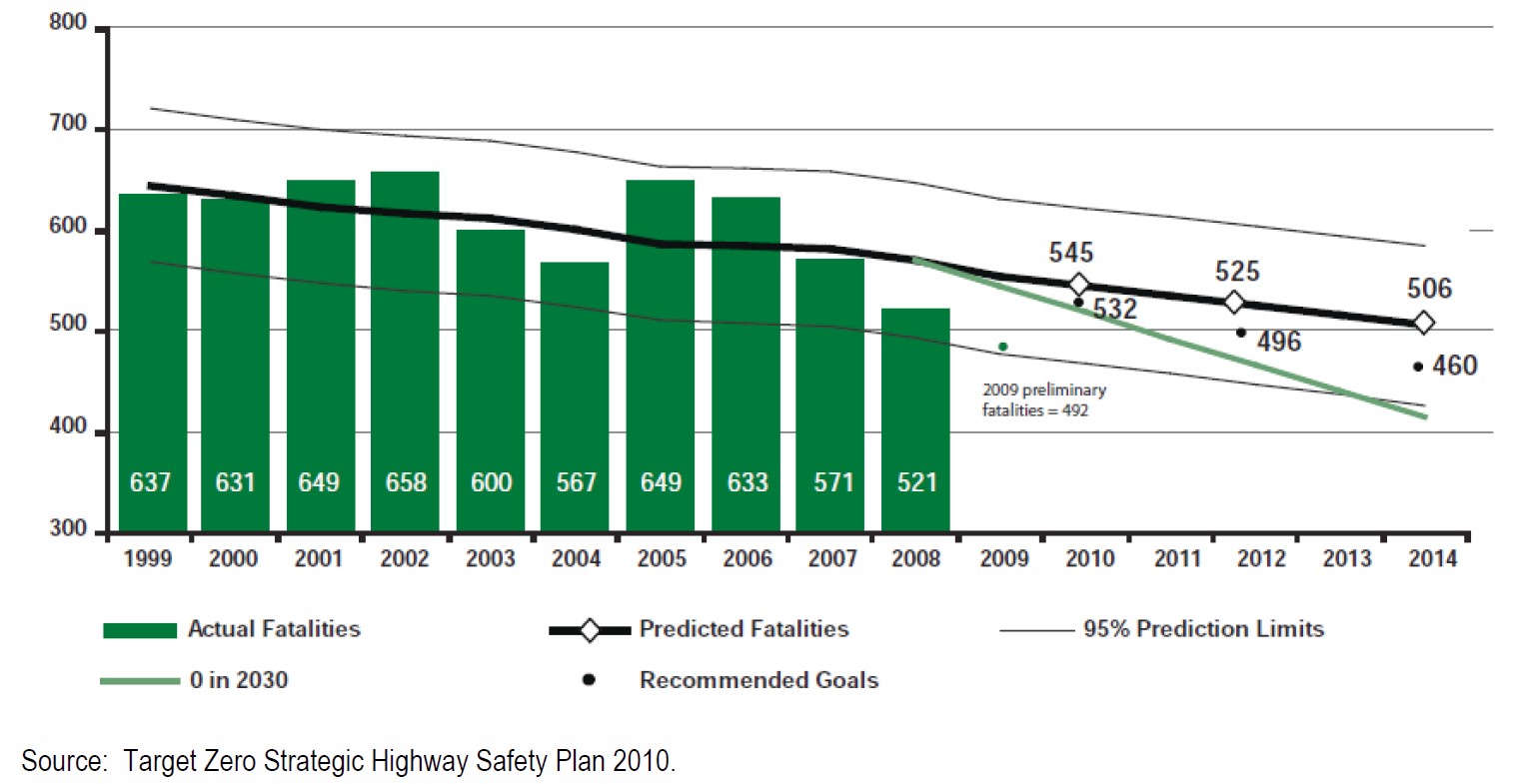
Road Safety Manual
A manual for practitioners and decision makers
on implementing safe system infrastructure!

Road Safety Manual
A manual for practitioners and decision makers
on implementing safe system infrastructure!
Road Safety Targets, Investment Strategies Plans and Projects described the process required to set quantifiable road safety targets as part of policy development and plans. As discussed in that chapter, there is a requirement to constantly monitor and analyse progress against these targets. As well as monitoring long- term targets, there is also a need to ensure that relevant agencies and government departments are implementing the improvements outlined in the plan through monitoring of intermediate targets. As an example, the State of Washington in the United States, previously used the Holt Method to forecast data trends to set near term targets and to set intermediate targets for the strategic highway safety plan.. The figure below shows a visual representation. The standard deviation is shown to report a range of what can be expected in the near-term. Also see: Effective Management And Use Of Safety Data.

Such monitoring can also help establish whether these activities are having the desired effect on safety outcomes. In many cases, this monitoring will identify adjustments that can be made to help improve safety outcomes. Data requirements for these activities have been outlined in Effective Management And Use Of Safety Data.
The following section provides guidance on how to analyse and evaluate road safety infrastructure interventions. Some of these approaches can be used to help evaluate performance against targets. However, evaluating the success of interventions in meeting targets can be a more complex task because there are often many changes taking place simultaneously. Solutions to this issue include the evaluation of ‘packages’ of treatments (i.e. determine the effect of the combined activities that are related), or the application of statistical modelling to try to determine the impact of individual measures. Whichever approach is taken, the creation of a strong data collection and analysis process is required to ensure that adequate data is collected. This will include the need for data on final outcomes (crash data) and intermediate measures (safety performance indicators, e.g. various behavioural measures, attitude survey information, and infrastructure measures). For further information on data requirements see Chapter 5. For information on evaluation of non infrastructure interventions, there are a number of important reference documents. These include the UK website and toolkit on evaluation of education, training and publicity programmes (http://www.roadsafetyevaluation.com), as well as global good practice documents on helmets (GRSP, 2006) and drink driving (GRSP, 2007), speed (2008), seatbelts and child restraints (GRSP, 2009), two and three-wheeler safety (WHO 2017), road safety legislation (2017 WHO). The Czech Republic case study shows an example of setting and monitoring targets for the countries efforts to reduce number of people killed and injured on its roadways.